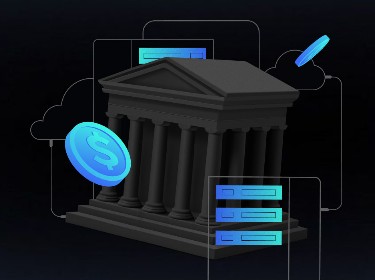Though big data and security may initially seem like an unlikely pairing, they have demonstrated a remarkable ability to complement each other. This has led to significant advancements in big data security analytics and made it an increasingly important field.
Since security has always been a paramount concern for businesses across various industries and sizes, they have been proactive in adopting diverse security measures to protect themselves, their customers and users, and their data.
One of the most promising and effective techniques so far has been big data security analytics, which is expected to reach a market size of $35.3 billion by 2026.
Read on to find out more about big data analytics in cybersecurity, including its main use cases and benefits for businesses, and discover how to implement big data analytics within your company.
Explore our comprehensive data analytics services, featuring expert consulting and seamless integration, and learn how they can enhance your business operations
What is big data security analytics and why is it important?
Big data security analytics is a vital cybersecurity strategy that focuses on examining and applying vast datasets to bolster security protocols within a company.
The process harnesses advanced analytical techniques and algorithms to sift through extensive data streams and pinpoint any irregularities, patterns, and potential security threats.
The primary goal of big data security analytics centers on the proactive identification and neutralization of security vulnerabilities, thus preventing potential breaches before they can affect the business.
The adoption of this strategy enables companies to manage the complexities of modern digital threats effectively. Plus, through insightful analysis, businesses are equipped to create precise and robust security measures, thereby safeguarding their essential data assets and reinforcing stakeholder confidence.
What are the main benefits of big data security analytics for businesses?
![]()
Embracing big data security analytics offers numerous significant benefits, including improved incident response, more advanced predictive capabilities, cost efficiency in security operations, an enhanced security posture, and increased stakeholder confidence.
Let’s explore each of these advantages of big data security analytics in greater detail.
Improved incident response
The essence of effective incident management lies in swift and informed decision-making — and big data analytics offers a detailed overview of security incidents, which enables organizations to accurately assess the nature and urgency of threats.
Thanks to this comprehensive insight, security teams can strategically deploy resources where they are most needed, thus ensuring rapid mitigation of risks and minimizing operational disruptions.
Advanced predictive capabilities
The analysis of historical and current security data through predictive analytics provides insight into potential future threats. It detects emerging patterns that signal possible security incidents and empowers organizations to proactively adjust their defenses.
Thus, staying a step ahead of attackers allows businesses to fortify their systems against anticipated threats, which in turn substantially reduces the risk of successful cyber attacks.
Cost efficiency in security operations
Automation in threat detection and analysis through big data analytics translates into significant cost reductions by eliminating the need for extensive manual supervision and allowing for the reallocation of resources to critical business sectors.
As a result, companies can strengthen their security frameworks, streamline operational expenses, and achieve a more refined distribution of the security budget.
Enhanced overall security posture
Big data analytics ensures organizations remain vigilant and adaptive in their security posture.
The technology continuously scans the security landscape to spot and mitigate vulnerabilities and keep organizations ahead of new and evolving cyber threats.
Maintaining this vigilant stance aligns security measures with the most current threat intelligence, thereby securing the company’s data and systems more effectively.
Increased stakeholder confidence
Using big data analytics in security demonstrates an organization’s commitment to protecting data and building trust with customers, partners, and investors.
This, in turn, reinforces existing relationships, attracts new partnerships and investments, and highlights the company’s dedication to adhering to and embracing the highest security standards.
Big data security analytics: top 7 use cases
![]()
Big data security analytics can be used in a variety of directions.
Our IT consulting company shortlisted the five most prominent use cases and applications of big data analytics in security.
1. Preemptive cyber threat identification
Big data security analytics arms businesses with the opportunity to process enormous data sets and spot irregularities that may indicate security breaches.
Algorithms analyze behavioral patterns across the digital environment, quickly flagging instances of malware infections, intrusion attempts, and other malicious activities.
The rapid identification of these threats limits attackers’ opportunities to cause damage and protects the organization’s data.
2. Data loss prevention
Data analytics tools scrutinize file transfers, emails, and other data outflows for patterns that might indicate a data breach or unauthorized disclosure.
Identifying such activities in time enables the immediate lockdown of sensitive data and helps prevent potential data loss or exposure.
3. Cloud security optimization
As businesses are increasingly migrating to cloud environments, big data analytics becomes part and parcel of monitoring and securing cloud-based assets.
The technology has the capacity to analyze activity logs and configurations across cloud services and pinpoint misconfigurations or anomalous user behaviors that could indicate security risks.
The insights gained from the analysis drive the optimization of cloud security settings and help make sure that data stored in the cloud is protected against unauthorized access and cyber threats.
4. Security policy enforcement
Big data analytics empowers businesses to maintain consistent security across all systems and data. It scrutinizes network traffic, user behavior, and access logs to confirm adherence to security policies.
As well as this, big data security analytics detects any lapses in enforcement that could leave the company vulnerable to cyber attacks.
When such gaps are identified, the system automatically alerts security teams, facilitating swift corrective action to bolster defenses.
5. Network monitoring and protection
Big data analytics enhances network security through detailed investigation of data flow within a business’s network infrastructure and spots abnormal data patterns and potential vulnerabilities.
Focusing on both incoming and outgoing traffic, the analysis uncovers signs of unauthorized entries, data theft, and other malicious activities that signal potential security breaches.
6. Secure authentication processes
Analyzing enormous datasets, big data analytics systems can identify patterns associated with compromised credentials or unauthorized access attempts.
Enhancements in security protocols, based on analytics insights, lead to the development of more robust authentication procedures.
7. Compliance and regulatory adherence
In the context of stringent regulatory demands, big data security analytics simplifies the path to compliance.
The technology documents all security-related activities automatically and ensures organizations can easily show their adherence to regulations such as GDPR, HIPAA, and PCI-DSS. This helps organizations avoid financial penalties and strengthens their commitment to data protection, thereby solidifying their reputation among stakeholders.
Explore our detailed guide to RegTech and discover the benefits it offers
How to implement big data security analytics in 6 steps
Implementing big data security analytics within your business workflows presents a challenging and demanding task.
However, devising a well-structured strategy can significantly alleviate the burden and empower you to execute all tasks correctly.
Below, we present six steps for consideration before proceeding with big data analytics in security workflows.
Step 1. Evaluate existing data and security frameworks
Kick off the enhancement of your security posture with a thorough audit of your current data management and protection practices.
During this step, you are also to discover the paths through which your data travels, identify its storage points, and gauge the effectiveness of your existing security measures to safeguard this data.
With this knowledge, you will be in a position to integrate analytics into your security strategy effectively.
Step 2. Choose suitable analytics solutions
Investigate and select the big data analytics tools and platforms that comply with your company’s security objectives and data infrastructure.
Factors such as the ability to handle diverse data types, scalability to manage growing data volumes, and compatibility with existing systems merit consideration during this phase.
Take a look at these 12 AI-powered data analytics tools and examine their key features
Step 3. Address privacy regulations and data governance
Data privacy and compliance are important components to consider from the outset as well.
As such, the development of a comprehensive data governance framework becomes a necessity.
Remember that it is also necessary to ensure that this framework adheres to privacy regulations and ethical guidelines and that data analysis activities remain within legal and ethical confines.
Step 4. Integrate and prepare data sources
Incorporating and organizing data sources into a cohesive unit is vital for creating a unified data repository for further analysis.
The stage necessitates detailed planning to establish protocols for data collection, storage, and preprocessing in order to empower companies to execute a comprehensive analysis process that complies with rigorous security standards.
Step 5. Implement and refine security analytics
Launch the analytics solution through a pilot program to enable fine-tuning based on the first set of insights gathered. This will serve as a crucial test and reveal how well the solution meshes with the existing security infrastructure and where it can improve.
Making adjustments after this initial feedback guarantees a more refined integration into your business’ security measures.
Step 6. Continuously monitor and adapt
Once the analytics platform is up and running, prioritizing continuous monitoring is fundamental.
Adapt analytical models and strategies to reflect the changing landscape of threats and any shifts within the company. This ensures the enduring strength and effectiveness of the security analytics framework in the face of emerging challenges.
Seeking assistance in providing efficient security audit services? Reach out to our seasoned team for tailored guidance and expertise
Key challenges of big data security analytics to be aware of
Once you are prepared to proceed with big data security analytics, ensure that you give due consideration to the vital aspects enumerated below.
Scalability concerns
As businesses grow, the volume of data they generate and collect also increases exponentially. A primary challenge here lies in ensuring that the big data security analytics solution can scale accordingly.
Therefore, companies must assess whether their data analytics platform can adapt to growing data volumes without compromising performance or security. This necessitates proactive monitoring and optimization of infrastructure as well as periodic evaluations of the scalability and efficiency of the analytics solution.
Data diversity handling
Dealing with the diverse formats of data that businesses encounter, from structured databases to unstructured sources like social media or IoT solutions and devices, poses a significant challenge.
To address this issue, companies should invest in robust data integration and analytics tools along with leveraging expertise from IT professionals to implement comprehensive strategies tailored to their unique needs.
Ensuring real-time analysis
For security analytics to be most useful, it must offer real-time or near-real-time capabilities. The challenge involves processing and analyzing data swiftly to detect and respond to threats as they occur.
With regard to this, companies must evaluate the latency of their analytics processes and strive for minimal delay. They should also consider investing in high-speed data processing technologies, optimizing data pipelines, and implementing efficient algorithms to enable rapid detection and response to security incidents.
Check out our comprehensive overview of real-time data visualization and its key capabilities
Complexity of security threats
Unfortunately, cyber threats constantly evolve and become more sophisticated over time.
Thus, big data security analytics solutions must keep pace with these changes and adapt to new attack vectors and tactics. This requires continuous updates to analytical models and algorithms, posing a challenge in staying ahead of attackers.
Maintaining data quality
Ensuring the accuracy of security analytics heavily relies on the quality of the underlying data.
Inaccurate or incomplete data can result in misleading analysis, potentially undermining the entire decision-making process.
To mitigate this risk, companies must prioritize top data quality management practices, including data validation, cleansing, and enrichment alongside deploying advanced analytics techniques to enhance data accuracy and reliability.
Resource allocation
Implementing a big data security analytics solution demands significant resources not only in terms of financial investment but also in computing power and human expertise.
Therefore, you should carefully plan your company’s resource allocation to guarantee the sustainability of your analytics initiatives.
Balancing transparency and security
While big data analytics can enhance security posture, it also raises questions about user privacy and data ethics.
In order to address this delicate balance, companies should ensure compliance with relevant regulations and industry standards while actively engaging with stakeholders to communicate their data usage policies and uphold ethical principles.
We are esteemed experts in the field of security. Discover how our PixelPlex team engineered a groundbreaking web3 security solution that protects users from over 60 web3 scams
6 best big data security practices to consider
![]()
To maximize the benefits of your big data security analytics initiative, it is crucial to adopt best practices.
Let’s explore some of the most effective and viable big data security strategies.
1. Data encryption
Employing strong encryption techniques for data at rest and during transit acts as a fundamental layer of defense.
For instance, Advanced Encryption Standard (AES) with 256-bit keys offers robust protection, ensuring that, in the event of unauthorized access, the data remains indecipherable without the correct decryption keys.
2. Rigorous access control measures
The establishment of stringent access controls, based on the principle of least privilege, allows organizations to guarantee that individuals access only the data necessary for their roles.
Role-based access control systems automate this process and align access permissions with organizational roles and responsibilities, thereby minimizing the risk of internal and external data breaches.
3. Continuous monitoring
The setup of monitoring systems to scrutinize network and data access activities around the clock allows for the early detection of anomalous behavior.
Such systems can also analyze patterns of data usage and alert security personnel to deviations from the norm, which may indicate a security incident in progress.
4. Updates to security software
The world of cyber threats changes rapidly, which makes it imperative to keep all security mechanisms current.
Scheduled updates and the regular revision of security protocols ensure the company remains protected against emerging vulnerabilities and attack vectors.
5. Security audits
Engaging in routine security audits provides a thorough examination of the company’s defenses against cyber threats. These should encompass a review of both the technological and procedural aspects of security and deliver insights that guide the fortification of the team’s data security practices.
6. Cybersecurity education
Providing employees with ongoing training in cybersecurity best practices equips them with the knowledge to recognize and mitigate security threats.
The training should preferably cover essential topics such as recognizing phishing emails, securing sensitive information, and the criticality of strong password policies, thus fostering a culture of security awareness across the entire organization.
Explore how our expert DevSecOps consulting services can effectively secure your enterprise assets
Top 5 big data security analytics tools
There are many different security platforms that utilize big data advancements to various extents to help businesses keep their assets and data secure.
Let’s take a look at some of the most prominent ones.
1. Splunk
Splunk is famous for its comprehensive ability to ingest and analyze data from virtually any source and offer real-time visibility into security threats and operational issues. Its platform facilitates the deep dive into data necessary for detecting complex security incidents.
2. IBM QRadar
QRadar by IBM specializes in providing a unified architecture for collecting, storing, and analyzing security data.
The platform’s analytics capabilities help identify hidden threats and automate compliance processes, which makes it a trusted choice for enterprises seeking to bolster their security posture.
3. LogRhythm
Offering a suite of tools designed to detect, respond to, and neutralize cyber threats, LogRhythm emphasizes streamlined workflow for security teams.
The solution integrates advanced machine learning and other analytical techniques to enhance threat detection and response times.
4. ArcSight
Developed by Micro Focus, ArcSight offers a sophisticated security information and event management solution. It is also proficient in real-time threat detection, utilizing advanced analytics to sift through massive volumes of data for signs of compromise, thereby allowing for quicker remediation actions.
5. Apache Metron
Emerging as an open-source project, Apache Metron integrates a variety of big data technologies to offer a scalable platform for real-time security event monitoring and analysis.
It caters to businesses looking for customizable and extendable security solutions and facilitates advanced threat detection and rapid incident response capabilities.
Closing thoughts
As businesses grapple with the complexities of always-advancing cyber threats, the mastery of big data analytics has become an indispensable defense mechanism.
Recognizing the integral role of big data in preempting potential security breaches, companies should enlist the expertise of seasoned professionals in this field.
PixelPlex provides specialized big data services, empowering businesses to harness this potent tool for improved resilience and strategic advantage.
Our offerings encompass:
- Big data consulting
- Data science engineering services
- Data security solutions
- Data engineering and architecture
- Machine learning consulting
- Big data integration
- Data visualization services
- Data quality assurance
- Data governance and security
- Business intelligence services
- Web accessibility consulting services
Partner with the PixelPlex team to revolutionize your approach to cybersecurity and elevate your defenses to new heights.




